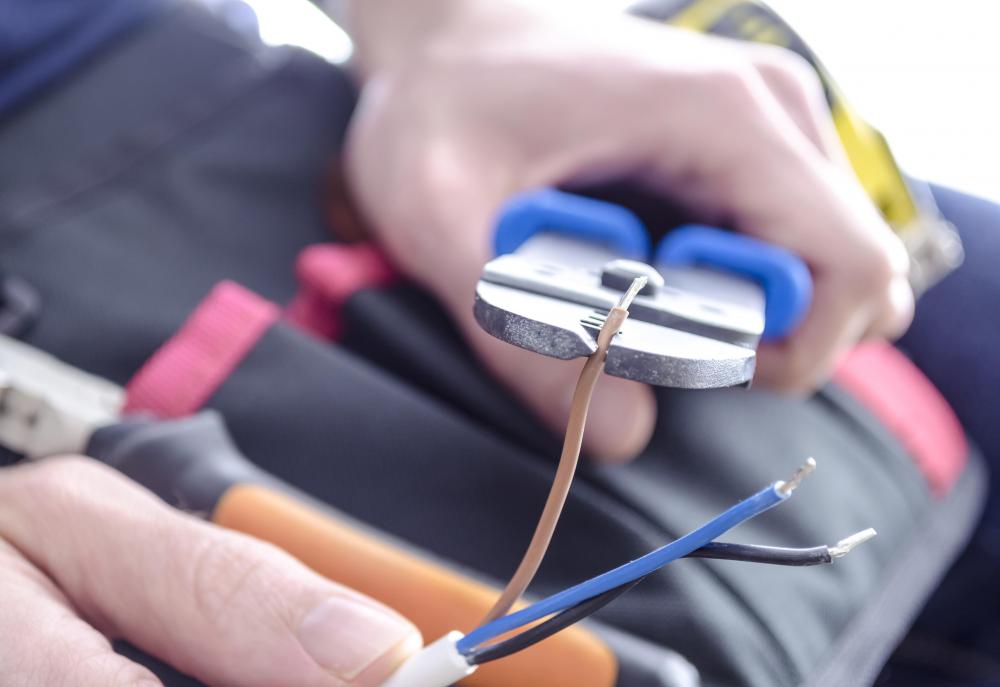At EasyTechJunkie, we're committed to delivering accurate, trustworthy information. Our expert-authored content is rigorously fact-checked and sourced from credible authorities. Discover how we uphold the highest standards in providing you with reliable knowledge.
How do I Splice Cable?
When connecting two separate cables together, it is necessary to splice cable in order to create one cable. There are five steps required to splice cable: check compatibility, cut the cable, strip the wire coating, attach the cables together, and cover. The tools needed to splice cable are wire cutters, needle nose pliers, wire strippers, and electrical tape.
The first thing to do when splicing cable together is to make sure that they are compatible. Both cables must be the same gauge, thickness, and type. This is a safety issue. Cables are simply the transportation system for signals or electricity. Each cable is inspected, tested, and rated to carry a certain level of activity.

If the two cables match, then you are still operating within this limit. If one cable is larger or heavier than the other, you risk overloading the cable. The gauge and thickness is printed on the outlet plug for every electrical cable. Only splice cable together if you are sure the two cables match.
Always check that the cables are not plugged into the electrical socket before starting any work. Cut the cable with a sharp blade so that the edges of both cables are fresh and not frayed. Avoid crushing the wire when cutting the cable by using a tool that is large enough for the diameter of the cable.

There are two methods of stripping the wire coating: use wire strippers or a sharp knife. Remove at least two inches (5.1 cm) of coating from the wire. A wire stripper is a tool designed to remove the plastic sheathing surrounding a wire without damaging the wire. There are available in a range of dimensions and are able to accommodate multiple sizes. If you choose to use a knife, make sure not to cut the wire itself and to cut away from your body to avoid accidents.
Once the wire is accessible, separate the different color wires by pulling them slightly apart. Match the wires together by color and size. Twist the matching wires together. Once all the wires are twisted together, check for any fraying and make sure that the wire is not loose.
There are two options to cover the section of spliced cable: solder or electrical tape. It is possible to solder the units together, but it requires skill, steady hand and the necessary tools. Electrical tape achieves the same goal, but is faster and cheaper. Tape the twisted wires together and then apply tape to secure the twisted wires to the existing cable. Over tape 2 inches (5.1 cm) on either side to provide a secure fit.
AS FEATURED ON:
AS FEATURED ON:












Discussion Comments
I discovered wire splicing more or less by accident when my cat chewed through the power cord for a cordless phone. I can only imagine she got a nasty shock - and yet she kept doing it! I was too cheap to buy a new power cord, plus I didn't want to wait for shipment or delivery, so I did it myself. I just cut and stripped the wire before splicing it like it describes above.
I used electrical tape since it's what I had lying around, but my understanding is that it's not the most permanent of repairs. You might be better off soldering it if you can if the cable is going to be somewhere inaccessible or if you want to make sure it's extra-reliable.
Post your comments